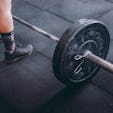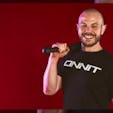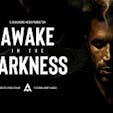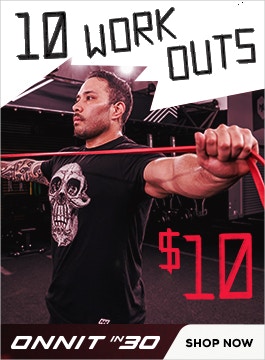There’s an old expression that all roads lead to Rome, meaning that there’s no one path to reaching a goal. And while it implies that you can get what you want by many different means, when you think about it, the saying also serves as a clear set of travel directions. In the context of one’s fitness journey, you can never optimize strength, body composition, health, or any other single quality without paying attention to all the others. And if you ignore the others, you’re sure to go off track. This philosophy is Onnit’s mission of Total Human Optimization in a nutshell, and it’s also a theme in this week’s Onnit Story—the latest edition in a series of live video interviews with people who have made inspiring life changes thanks in part to Onnit’s help.
Sean Hyson, Editor-in-Chief of this blog, speaks to Onnit Chief Fitness Officer John Wolf about how he integrated unconventional training with old-school strength work for greater longevity. See the video of Sean’s interview below, along with an edited transcript of the highlights, time-stamped so you can find those moments in the video, and stay up to date with Onnit Stories by following Onnit’s Instagram TV (IGTV), where a new one appears every other week.
[Editor’s Note: In addition to being inspiring, Hyson is exceptionally handsome.]Sean Hyson Show Notes
3:45 – What Sean Does at Onnit
I was brought on in 2016 to run the Onnit blog. I’ve been writing and editing fitness, nutrition, health, and lifestyle content for almost 20 years now, and the latest, greatest stuff is on our blog, so check it out at onnit.com/academy. I’ve evolved from that role to where I’m doing a lot of the copywriting as well—landing pages for our products, including the new Alpha BRAIN® Black Label and Focus Shot, and our fitness equipment. A lot of the stuff you see up on the main Onnit site now has been written or edited by me. I also do emails, social media copy, and whatever else needs to be written around here, as needed. The Onnit team usually rings me up to do it. [Laughs]
It’s been an honor to work here, and it’s been a lot of fun. I like that Onnit allows you to use a voice that has some humor and lightheartedness to it, so it’s not just straight science all the time. Onnit as a brand has a lot of personality—and a lot of personalities behind it—and it’s great to be able to bring those to the forefront with articles and interviews.
6:05 – How Sean Found Onnit

I was the fitness editor and then the training director for Men’s Fitness and Muscle & Fitness magazines for many years, overseeing all the fitness content, and living in New York City. I was in the magazine world for a long time and wrote a book for the Men’s Fitness brand—101 Best Workouts Of All Time. I’d been a fan of the Onnit brand for a while, having found it through Joe Rogan, of course, and some of the UFC fighters that Onnit sponsored at the time. In the summer of 2015, I was attending a fitness conference, and I happened to meet you, John, and a lot of the other people at Onnit—Aubrey Marcus was at that conference too. We started a connection there, and about a year later, I spoke to Aubrey again.
I was writing an article for Men’s Fitness about up and coming supplement companies to look out for, and I said to my editors, “Let me write about Onnit. I know some of the guys over there, and I like what they’re doing. They have a different take on supplementation. Their products are clean, well-sourced, and they work. This is something that people should know about.”
I ended up interviewing Aubrey for that article over the phone. I guess we hit it off, because he practically offered me a job right there. He was talking about how well Onnit takes care of its employees, and how happy everybody is there. They have a gym on site and all these great amenities and perks. I said, “Well, if you need any help, if you have an extra seat around the office, I’d love to come down.” He said I should come interview for a new position as blog editor, and, very shortly after that, I showed up in Austin, Texas.
7:45 – How the Jerky Boys Brought Sean and Onnit Together
John: I remember hanging out with you at the conference where you first met the Onnit team. I remember you and some of the other guys who were attending quoting The Jerky Boys comedy prank phone calls all night.
Sean: [Laughs] Well, that’s always a strategy I use to make a good impression on people when I meet them for the first time. I try to bring up obscure 90s comedy sketches, and if they can talk about that, I figure we can talk about anything.
John: I think I liked your guys’ version of the phone calls better than the original recordings.
Sean: I’m still available to do Sol Rosenberg impressions upon request.
10:10 – Did Onnit Live Up to the Hype?

I can honestly sit here and tell you that everything that I was promised about Onnit came true. The work/life balance was great. The amenities were great. I remember walking into the building the first time and seeing all the women wearing yoga pants. Everybody was in gym clothes—not just in the gym, but at their desks, too. It was just such a casual, friendly environment. Coming from New York and the very formal world of publishing, to see people just being themselves and dressing casually and living that workout lifestyle was really exciting.
Most of the staff at the fitness magazines I worked for were just professional journalists. They were just there to do a job. They didn’t care what magazine they worked for, and most of them had no passion for fitness or health. We used to kid around by saying, “How many packs a day does the average Men’s Fitness employee smoke?” Because many of them were smokers as well. Here, these people were writing articles about how to be healthier, but virtually none of them were really living by those guidelines.
At Onnit, everybody was living the lifestyle they were promoting, and they were also having a great time, too. We had a massage room, and kombucha on tap. Some of those perks have morphed a little bit since the pandemic hit and many people are working remotely now, but I still think it’s the best job I’ve ever had and the best office environment I’ve ever been a part of.
We’ve had so many brilliant people coming in there to offer services—whether it’s dry needling therapy, massage, or seminars or workshops—and these people became part of the Onnit community, too. They got absorbed into our world, and we all became friends. This enormous community has developed so naturally from the unique kind of office that Onnit created.
15:25 – Sean’s Best Interviews
How many times have I interviewed you, John? I’ve done articles with you and Shane Heins [Onnit Director of Education], Juan Leija [former Director of Fitness Programming], and Eric Leija. I’ve interviewed a bunch of our influencers and sponsored athletes, including Donald “Cowboy” Cerrone and Tim Kennedy. That’s been the best part of my job, probably—the networking and the ability to have these conversations with interesting people and learn something new from them. I can remember tips I got from coaches that I interviewed many, many years ago that I still use in my own workouts today—diet tips and general health stuff, and life advice as well. It’s amazing what you pick up being a journalist for so many years. Although I wish I remembered more of it than I do [laughs]. But what I have retained has been life-changing.
For anybody who doesn’t know, go to our blog and check out Angi Sanders’ story. She’s works in our customer service department and is a moderator for our Onnit Tribe now on Facebook and Discord. She’s come that far along. She has an amazing story. You’ll laugh, you’ll cry, and you’ll walk away with a new perspective on life. She’s just one of many people I met through Onnit that has been amazing to talk to.
18:40 – How Sean is Helping to Change the Public’s Perception of Onnit
I think when I started, the perception most people had of Onnit then was that it was a brand for hardcore MMA fans and Joe Rogan listeners—something that was just for guys who wanted to swing the mace and the kettlebells around. I think we’ve done a lot with these Onnit Stories to break down that stereotype and make it clear that Onnit can be for everyone. Or at least for a lot more people than it had been serving. Onnit can be for women, for men, younger people, older people, people with injuries, people who are lifelong athletes, and people who are not athletic at all.
I think we can all improve with the information that Onnit is putting out. Being able to meet so many people and talk to them, I found out that one person is just as interesting as the next. Somebody who may not seem super flashy on social media, may not have a great body or a bunch of followers, that person can be just as fascinating to talk to as the classic fitness influencer. You can learn as much or more from that kind of person.
When you talk to enough people, you find out that we’re all basically the same. It’s a shared human experience. To find out that you have something in common with somebody who, on the surface, you would think you could never relate to creates a very human moment. It really makes you feel connected to other people in the world, and it reminds you not to take people on face value or be judgemental.
23:10 – Sean’s Other Writing
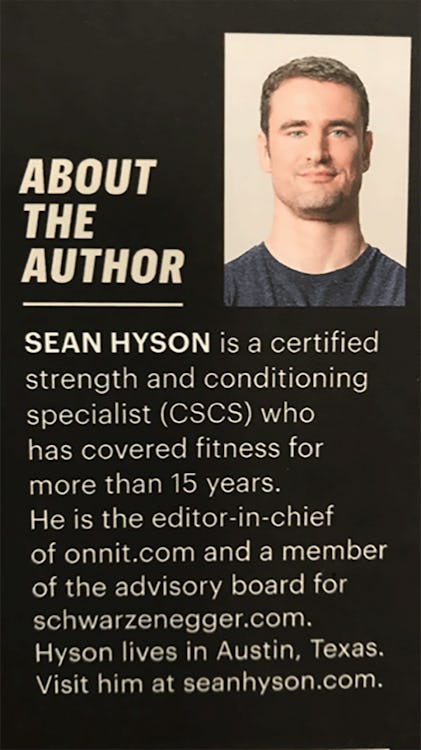
I’ve done two print books—one for the Men’s Fitness brand, called 101 Best Workouts of All Time, which is just what it sounds like, and one for Men’s Health, called The Encyclopedia of Muscle, which is about all the different training techniques that have been handed down for generations. I’ve done a couple of e-books on my own as well, including The Truth About Strength Training, which includes a 12-week workout program, and I’m working now on a fitness business book with a co-author.
One of the things I love about Onnit is that they respect the individual. We’re all cogs in a wheel to an extent, trying to serve the greater good of Onnit and the community, but we’re also still individual people with our own needs and interests in things that might lie well outside of what is being sold at Onnit. The top brass at Onnit doesn’t give you a hard time about that. You’re allowed to be yourself and do your own projects as long as they don’t conflict with work, which I think is just common sense. It’s been amazing to see so many people in the gym create these online training businesses using Onnit as a platform. They might go on and do other things, but most of them, to my knowledge, have remained loyal to Onnit. They still show up at Onnit. They still maybe train clients or teach classes at Onnit, and that relationship is maintained. It’s not like we’re all using this place as a springboard and then leaving it behind. It’s more like bringing other things in to coexist with it.
26:15 – What Sean Has Learned From Onnit About Training
One of the first things I learned, and I’m still learning it, is just how to move. The simplest concept ever, right? You’d think it would be the foundation of all fitness education, but so many other places, other authorities in the fitness world, don’t talk about it. How to stand, how to breathe, how to move. These are things that we really should be learning in gym class when we’re kids, but they don’t teach them.
I remember you, John, giving me cues like “level pelvis,” “proud chest.” These are great cues that you have to be mindful of all the time when you’re sitting, when you’re walking around, when you’re exercising. These little things make a big difference as far as the alignment of your body, and they go a long way toward preventing an injury.
I used to take Durability classes at Onnit Gym. A lot of the people who went at that particular hour were bound up, muscular guys who didn’t move so well. I’ve been missing that so much since the pandemic, but I’ve found through the Onnit In 30 programs that are on the website now that I’ve been able to rekindle that fire. I’ve gotten back into the mobility in such a hardcore way, and it makes such a difference. Learning to improve movement skills and range of motion is such a great complement to all the hard strength training that I’ve done over the years.
I’m very bound up in my hips from years of sitting at a desk and writing articles. All the hip series stuff John used to take us through, and that is available in the Morning Mobility and the Move and Groove programs we have in Onnit In 30, can absolutely be like strength training. You’ll be sweating, you’ll be sore, you’ll feel it burning while you’re doing it.
For some people, those exercises very well could be a strength workout all on their own, and that’s totally fine. If that’s challenging you to the point where it feels like a weight workout, that means you need to get stronger there. Once you do, it’s amazing how much better everything else you do feels.
If I can sum up Onnit, it’s that the holistic way is the only way. If you’re in this fitness world long enough, you’re going to find out that you can’t just do the stuff that you like. You can’t just eat the foods you like or do the one or two exercises or workouts that you like. You have to take a little bit of everything and really come at it from a more well-rounded perspective. It’s the only way you’ll be able to sustain it over time. So learn from everybody, take a little bit of this and that, and blend it in a way that works for you.
37:00 – Sean’s Favorite Unconventional Training Equipment

Being an editor at Muscle & Fitness for years, I was a very conventional trainer doing weightlifting, bodybuilding, and powerlifting. That was my background, and that’s what I trusted. When I got to Onnit, I found that they do all that stuff too at Onnit Gym, but they also do this whole other world of unconventional training. I was kind of reluctant to embrace it at first, since I didn’t really understand it, but I’ve come to respect it. I see all the different gaps it fills that conventional training leaves, and the way that it improves stability and grip strength and, again, movement skills.
I remember when we were beta testing the Onnit 6 Kettlebell program. I was in that first group of people who tried that program, and found that the rotational aspect of moving with the kettlebell was something I really hadn’t done before. I’ve carried that with me to this day. I still throw some kettlebell moves into my training here and there.
The steel club is another one. You meatheads out there like me, if you have tight wrists or a tight back and shoulders from years of pressing exercises, pull out the steel club. Get a light club and do wrist rotations with it. That really helps open up the forearm, the wrist flexor muscles. Pullovers with the club really helps open up the shoulder and the lat. These are things that you don’t have to be a full-blown, die-hard steel club or unconventional training enthusiast to just incorporate into what you’re doing, and they’ll help you get more out of what you’ve been doing. They might open up a whole new path for you, too.
Going back to that pullover with the club, when I learned that exercise, I was like, “Alright, I can use this as a warmup. I can use this as part of a cool-down. I can use this in place of another back exercise on my back or pull day.” Not only is it opening up these muscles, but it’s also teaching me how to move overhead properly. The “ribs down” cue comes into play with that exercise, and it’s such an important one, and something that I really didn’t fully grasp until I got to Onnit. Driving the ribs down, tucking the pelvis under, engaging the core, keeping the whole torso a solid column. That’s so valuable for protecting the lower back and protecting the shoulders, especially when you’re doing any kind of hinge movement or overhead pressing movement.
These are things that you don’t fully learn when you first get into lifting, or nobody really clues you into, but you learn from mistakes—and through pain over time—what not to do. If Onnit helps save you that trouble by teaching you those things with the unconventional equipment, then that’s great. You’ve done yourself a world of good.
44:00 – Sean’s Favorite Article to Write
Angi Sanders’ story is one. This is a woman who had a weight problem for years, and she was very unhealthy and unhappy. She, totally on her own, got into fitness and lost a bunch of weight and has transformed her life to the point where now she’s a fitness coach and a full-time Onnit employee—which had been a longtime goal of hers. She’s just found her niche and has transformed herself so amazingly. You couldn’t help but be inspired by that, no matter how much of a hard-hearted cynic you might be. She’s a great one.
Tim Kennedy was another great interview. MMA fighter, TV star, patriot. I’ll tell you one thing I learned from Kennedy. I asked him, “How are you able to step up and do these UFC fights and go into battle and all these incredibly intense things that you do? Things that most people can’t bear?” He said, “It begins and ends with these little decisions you make every day.” Like going to bed 10 minutes earlier tonight. Drinking water when you first get up in the morning. Deciding not to drink alcohol today. Getting your workout in no matter what. These things seem kind of minuscule and unimportant at the time, but they will add up to massive results over the course of your life, and prepare you to do things that seem impossible.
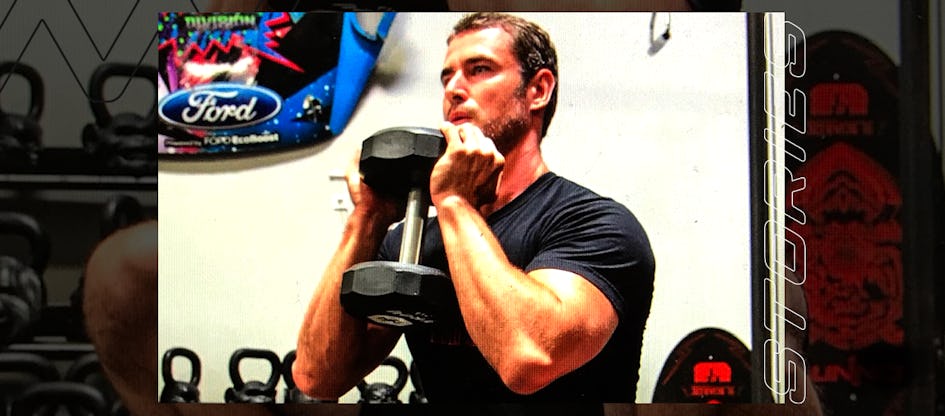
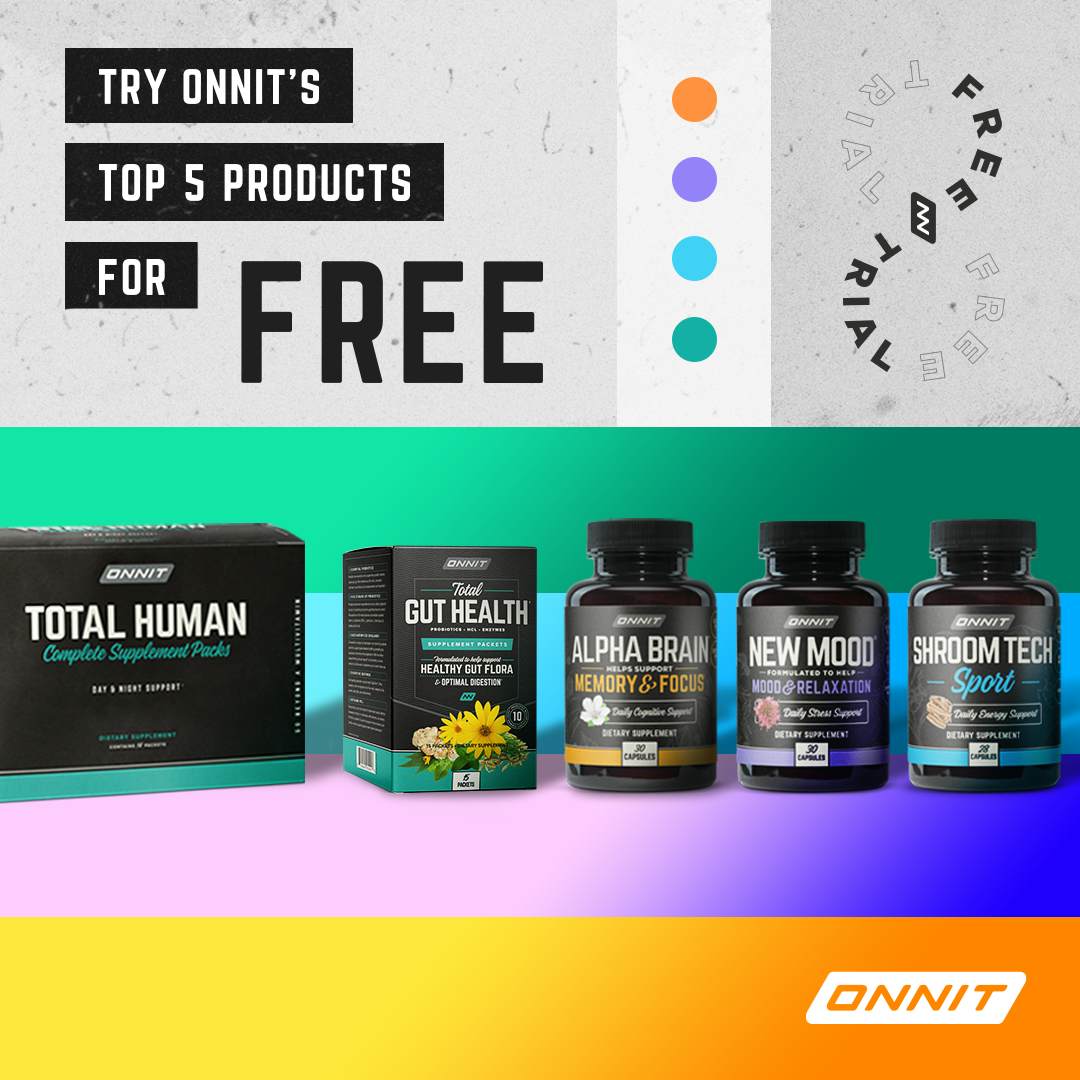)

